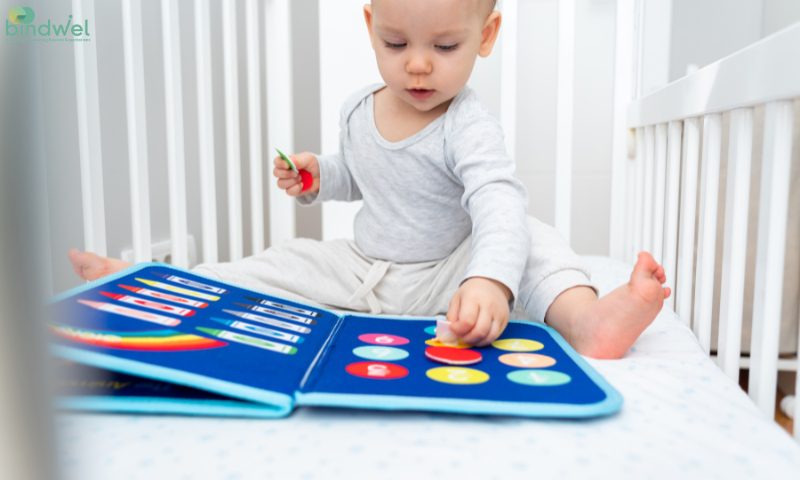Gift a book to a child !
And make her / him a reader
Several studies suggest that early exposure to books and storytelling can significantly benefit children in terms of creativity, imagination, and even long-term success. Here’s a breakdown of the research:
- Language and Cognitive Development: Studies have found that reading and storytelling improve language skills and cognitive development in children. According to research published in Developmental Psychology, children who are ready to regularly demonstrate enhanced vocabulary, better comprehension skills, and improved attention spans, all of which contribute to academic success.
- Creativity and Imagination: Storytelling and reading expose children to diverse worlds, ideas, and characters, helping them develop imaginative thinking. A study by the University of Toronto found that children who engage in imaginative play and listen to stories frequently show higher levels of creativity. Through stories, they learn to think beyond the present and explore “what if” scenarios, building a foundation for creative problem-solving.
- Empathy and Emotional Intelligence: Narrative exposure, whether through books or storytelling, allows children to experience life from different perspectives, helping them develop empathy. Research by the American Academy of Pediatrics shows that this empathetic understanding can improve interpersonal relationships and social success, as children learn to relate to others’ emotions and viewpoints.
- Academic Achievement and Long-term Success: Early reading habits have been linked to higher academic achievement and future success. A study published in Social Science Research found that children who grow up in book-rich environments tend to perform better in school, and the benefits carry into adulthood, including better job prospects and higher income.
- Critical Thinking and Analytical Skills: Reading and hearing stories help children build critical thinking skills. The process of following plots, making predictions, and understanding characters helps them develop analytical abilities, essential for both academic and real-world problem-solving.
- Mental Well-being and Self-confidence: Exposure to positive stories, especially those with diverse characters overcoming challenges, helps children build resilience and self-confidence. According to a study in Educational Psychology, children who engage with books and storytelling tend to have better mental well-being and confidence in their own creativity.
In short, reading and storytelling contribute significantly to a child’s imagination, creativity, and long-term success by enhancing cognitive, emotional, and social skills. These benefits are long-lasting and play a critical role in shaping well-rounded, successful individuals.


Impact of Interactive Books on Children’s Reading Habits:
Interactive and tactile elements make books far more than just a visual medium; they become experiential. These innovations keep children curious, help develop fine motor skills, and make reading time enjoyable. For reluctant readers or those just beginning to explore reading, these books can transform the activity from a passive experience into a hands-on adventure.
By combining traditional storytelling with sensory and multimedia elements, these books not only encourage children to read but also foster creativity, exploration, and a lifelong love for literature.
Interactive multimedia books and tactile book design elements, such as cut-outs, pop-ups, textured pages, and unique finishing techniques, offer children and readers of all ages a sensory-rich reading experience. Here’s a closer look at these innovative book designs and techniques:
1. Pop-Up Books
- What They Are: Pop-up books use folded paper engineering to create 3D elements that “pop” from the page as it opens. These designs bring characters, settings, or objects to life, adding a playful, hands-on experience.
- Why They Work: Pop-ups can spark curiosity and wonder in children, making reading an adventure. The movement and interaction keep young readers engaged and transform the story into a memorable, immersive experience.
- Example Applications: Classics like Alice in Wonderland or The Jungle Book have been adapted into pop-up formats, adding magic to these well-loved stories.
2. Cut-Outs and Die-Cuts
- What They Are: Cut-outs or die-cuts are openings within a page, offering glimpses into the next page or serving as visual connections between parts of a story.
- Why They Work: Cut-outs add dimension and a sense of progression, encouraging curiosity as children explore what lies ahead. They make pages feel interactive, as readers peer through windows or follow shapes that lead them deeper into the narrative.
- Example Applications: The Very Hungry Caterpillar by Eric Carle uses cut-outs to depict the caterpillar’s journey, making the book tactile and visually engaging.
3. Textured and Sensory Books
- What They Are: These books incorporate different textures that children can touch and feel, like soft fur for animals, bumpy scales for dinosaurs, or even scratch-and-sniff scents.
- Why They Work: For younger children, sensory stimulation enhances learning and engagement. Textures encourage them to connect with stories on a physical level, reinforcing concepts and creating stronger memories.
- Example Applications: Books in the Touch and Feel series feature textured pages for animals, foods, and more, inviting children to explore through touch.
4. Lift-the-Flap and Pull-Tab Books
- What They Are: Lift-the-flap books allow children to uncover hidden images or words under flaps, while pull-tabs let them trigger small animations or movements within the pages.
- Why They Work: These books offer a sense of discovery, allowing children to interact with stories at their own pace. Pulling tabs or lifting flaps encourages exploration and excitement, especially with educational content.
- Example Applications: Where’s Spot? by Eric Hill is a classic lift-the-flap book, letting children search for Spot the dog by lifting flaps throughout the pages.
5. Rough and Deckle Edges
- What They Are: Books with rough or deckle edges are designed to have a handmade, tactile feel, often evoking a vintage or artisanal look. Deckle edges are uneven and textured, giving the pages a unique, organic quality.
- Why They Work: Rough edges create a distinct sensory experience and add character to the book, making it feel special and unique in a world of smooth, uniform pages. This technique is often used for classic stories or limited-edition books.
- Example Applications: Many historical or special edition books are crafted with deckle edges, adding to their charm and aesthetic appeal.
6. Glow-in-the-Dark and Color-Changing Ink
- What They Are: Books that use glow-in-the-dark elements or thermochromic (color-changing) ink to create surprising visual effects. For example, certain sections might light up in the dark or change color with touch.
- Why They Work: These visual effects enhance engagement and excitement, especially for bedtime reading or themes of magic and discovery. Glow-in-the-dark details are particularly captivating for nighttime storytelling.
- Example Applications: Books like There’s a Monster in Your Book use glow-in-the-dark ink for spooky fun or bedtime appeal.
7. Fold-Out and Accordion Books
- What They Are: Fold-out books have pages that expand outward, often into larger scenes or panoramas, while accordion books can unfold in a continuous strip.
- Why They Work: These formats are visually stimulating and encourage kids to explore stories in new ways. They’re especially effective for landscapes, journey-themed stories, or stories that can be read in a sequence.
- Example Applications: Accordion-style books like Journey by Aaron Becker allow readers to follow an extended, wordless journey, engaging them visually from start to finish.
8. Sound-Enhanced Books
- What They Are: Sound books have embedded audio chips that play sounds, music, or narration when certain buttons or parts of the page are pressed.
- Why They Work: The combination of sound and visuals brings the story to life, especially for young children who enjoy interactive, sensory experiences.
- Example Applications: Animal-themed books where pressing a button plays the sound the animal makes, or musical books where children can press notes or play songs.
9. Lenticular Printing (Motion Books)
- What It Is: Lenticular printing creates an illusion of movement or depth as the book is tilted or turned. This is done by printing multiple images on a single surface in a way that shows different images based on the angle.
- Why It Works: This technique can show animated movements or reveal hidden images, making the book feel almost magical. It’s especially engaging for children as it adds a visual surprise with each turn of the page.
- Example Applications: A children’s story where characters appear to move across the page or scenes change as the book tilts.
10. Scratch-and-Sniff Books
- What They Are: Scratch-and-sniff books contain sections that, when scratched, release specific scents, like flowers, food, or other thematic smells.
- Why They Work: This multi-sensory experience adds another layer to storytelling by engaging the sense of smell, helping children relate to the story in a unique way.
- Example Applications: Food-themed books where children can smell fruit, candy, or other treats by scratching parts of the page.
11. Flip Books
- What They Are: Flip books contain a sequence of images on the corners or edges of pages that appear animated when the pages are flipped rapidly.
- Why They Work: This simple yet entertaining animation technique offers a dynamic, hands-on experience, helping children understand motion and storytelling in a creative way.
- Example Applications: Books that show a character moving or an event unfolding, like a leaf falling or a bird flying, as the pages are flipped.
12. Magnetic Interaction Books
- What They Are: Magnetic books come with small, removable magnetic pieces that children can place on different parts of the page, creating scenes or completing puzzles.
- Why They Work: The magnetic pieces allow for interactive storytelling, giving children control to rearrange characters or objects, which supports imaginative play and engagement.
- Example Applications: A book about a farm where children can move animals around, or a book about dressing up where they place different outfits on characters.
13. Heat-Sensitive (Thermochromic) Books
- What They Are: These books use thermochromic ink that changes color or reveals hidden images when exposed to heat (like from a warm finger).
- Why They Work: The color-changing effect adds an element of mystery and discovery, making reading interactive and exciting.
- Example Applications: Books where scenes change with heat, such as a hidden treasure map appearing, or weather changes in a story that reveal hidden messages or characters.
14. Sensory and Texture-Based Books
- What They Are: Texture-based books have various materials like soft fabric, sandpaper, rubber, or other tactile elements for children to touch and feel.
- Why They Work: For young readers, touching different textures can be educational and fun, enhancing their sensory development and keeping them engaged with the book.
- Example Applications: Books where animals are depicted with textures mimicking fur, scales, or feathers, or stories where natural elements like sand or water are represented through textures.
15. Puzzle and Activity Books
- What They Are: These books include puzzles, mazes, and other interactive activities that children must complete to progress through the story.
- Why They Work: Activity books encourage children to think critically and solve problems, making the reading experience interactive and mentally stimulating.
- Example Applications: Mystery-themed books where readers solve clues to uncover the ending, or adventure books where children complete mazes or puzzles on each page.
16. Journaling and Interactive Writing Books
- What They Are: These books encourage children to interact by writing or drawing on designated pages, fostering a sense of creativity and ownership in the reading experience.
- Why They Work: Journaling books transform readers from passive to active participants, encouraging them to make predictions, draw scenes, or add their thoughts to the story.
- Example Applications: Adventure stories where children complete sections by drawing their own maps, or a mystery where they jot down clues as they read.
The Gift of Reading: A Legacy of Learning and Growth
In a world filled with distractions, gifting a book to a child is an investment in their future. It’s a gift that keeps on giving, fostering a love of learning, creativity, and personal growth that will last a lifetime.
Ready to spark a child’s imagination? Gift them a book today and watch their world expand!
Follow Bindwel on Facebook, LinkedIn, Twitter, Instagram and YouTube for the more updates!
#GiftABook #ReadingForChildren #ChildrensBooks #Literacy #Education #Parenting





